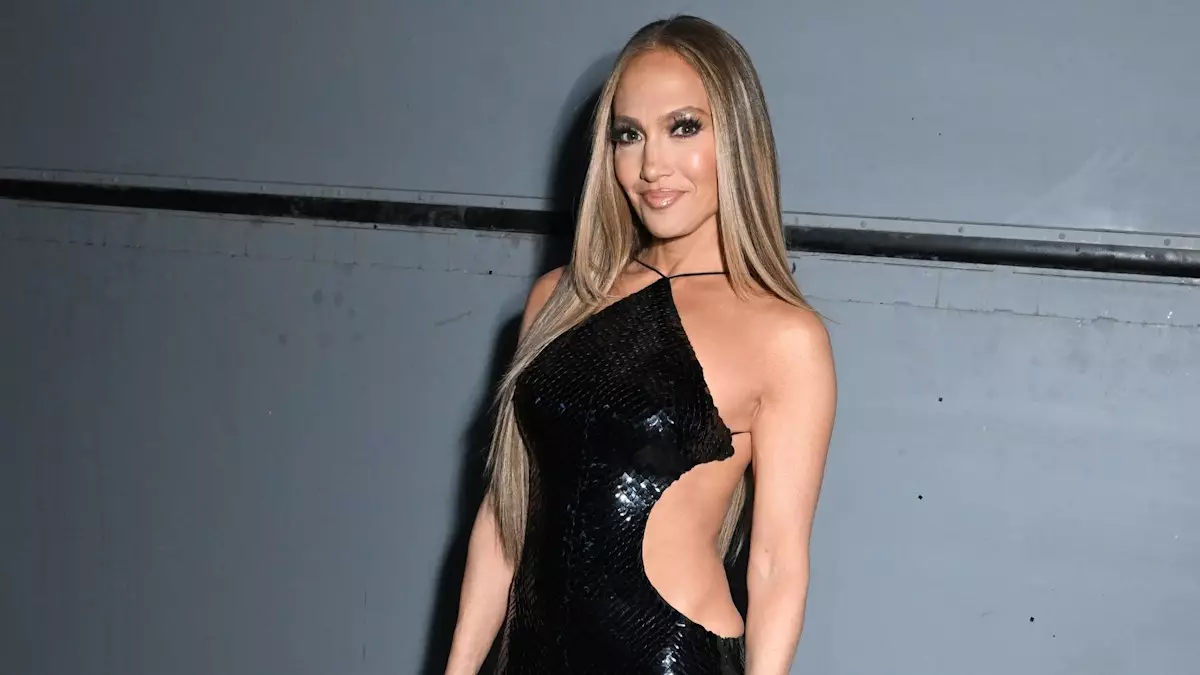In the realm of fashion, certain silhouettes manage to capture the imagination, making indelible marks on style history. Among these is the Bumster, a daringly low-rise pant silhouette introduced by fashion visionary Alexander McQueen in the early 1990s. With its provocative cut sitting just below the hips, the Bumster not only accentuated the waist and hips but also revealed tantalizing glimpses of the lower back. It became emblematic of the Noughties’ edgy aesthetic—a time when boundaries were routinely pushed in the name of style. McQueen famously described the lower part of the spine as an “erotic area,” and the Bumster silhouette represented this ethos in fashion form.
The return of this trend is not merely nostalgia; it signifies a cultural reinvigoration where daring fashion choices are celebrated. Jennifer Lopez, an enduring icon of the era, recently made waves by resurrecting the Bumster at the American Music Awards. Dressed in a midnight blue, backless jumpsuit that hugged her curves and showcased the hallmark cut, J.Lo reaffirmed the Bumster’s position in contemporary fashion discourse.
Historical Context and Evolution
To understand the full impact of the Bumster, one must acknowledge its roots. The early iterations of this silhouette were seen as somewhat scandalous during their time. Vikki Dougan, known as “The Back,” flaunted provocative outfits in the 1950s and ’60s that channeled the essence of what would later evolve into the Bumster. The design was further popularized by French actress Mireille Darc in the 1972 film “Le grand blond avec une chaussure,” where a unique black gown with a daring open back captivated audiences.
McQueen’s 1993 runway debut featured this provocative silhouette, which was characterized by its ability to elongate and enhance the body, moving beyond mere sensuality to convey artistic sophistication. The audacity of the Bumster continued to inspire other designers, including Thierry Mugler and Tom Ford, who each infused the cut with their unique perspectives—Mugler’s couture elegance and Ford’s unabashed eroticism—as they brought fresh iterations of the trend to the stage.
The Bumster in Contemporary Fashion
Fast forward to current fashion circuits, and the fascination with the Bumster endures. The recent collections of emerging designers showcase a revival of low-rise silhouettes, suggesting a collective embrace of the bold and the risqué. Designers like Dilara Findikoglu and Chet Lo have incorporated Bumster elements into their fall/winter 2024 collections, appealing to a fashion-forward demographic eager to challenge conventional aesthetics.
Moreover, major brands like Diesel and Dsquared2 have injected their own flavors into the Bumster revival as they prepare for the fall/winter 2025 season. Even celebrities such as Kim Kardashian and Julia Fox have been spotted sporting ultra-low-rise styles that evoke memories of the early 2000s. This resurgent trend has transcended mere fashion; it represents a cultural statement—a willingness to flaunt and embrace the body unapologetically.
Redefining Sexuality Through Fashion
The Bumster’s allure lies not only in its construction but in what it signifies about self-expression and sexuality. In a world that often simultaneously celebrates and shames the human body, the Bumster stands as a confident declaration of liberation. It fosters a dialogue around the shifting standards of beauty and body image, encouraging a new generation to reclaim their narrative.
Take, for instance, the recent fashion choices of stars like Alexa Demie at the 2019 premiere of “Euphoria,” or Hailey Bieber at the 2019 Met Gala—both brought a contemporary flair to the Bumster silhouette while speaking to a broader cultural acceptance of diversified body shapes and styles. These examples exemplify how the Bumster creates spaces for confidence and comfort among those choosing to embrace it.
As society grapples with the dualities of empowerment and objectification, the return of the Bumster illuminates fashion’s unique ability to challenge norms. It merges the personal with the political, suggesting that a simple cut can harbor profound implications about identity and self-acceptance. In a time when many are advocating for body positivity, the Bumster acts not only as a clothing trend but as a vehicle for conversation around sensuality and self-assuredness, reaffirming that it’s okay—if not empowering—to reveal and celebrate our forms unapologetically.

